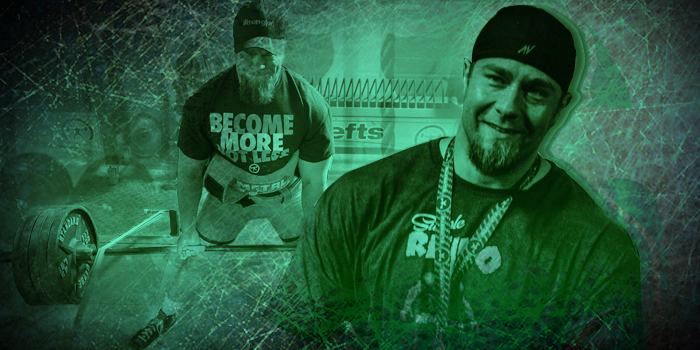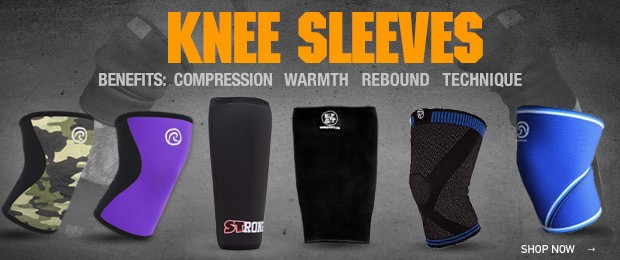
I am a thief. I am not afraid to steal ideas from anyone. If someone is successful, they are doing something right and I want to know if it will help me as well. As I got older, I started to look outside of powerlifting and toward what John Meadows was doing with his training and nutrition. Being around elitefts and seeing some of John’s seminars and workouts at the elitefts headquarters inspired me to take his ideas and added my own twist. With some help from Scott Stevenson, I improved my training and became less of a fat turd. These are some of the simple ideas that many of you can add immediately to your own training if you’re looking to do the same.
1. Hamstrings first
I have had knee issues for a long time. Years of football, wrestling, and then powerlifting took its toll. In 2013, I had my knee scoped and needed new ways to work around the pain of squatting. John recommended that I work my hamstrings, namely leg curls, before I squat. Get the blood moving. This would help bring fluid to the area and help warm up the joint. John told me, “At first your squat will go down, but it will come back up over a short time.” It was a few weeks before I was right back up there. Now, I keep this a mainstay in my training.
RECENT: Standing Ab Movements to Build Your Squat and Deadlift
Glute hams, band leg curls, Reverse Hypers™, sled dragging, and back raises in various combinations work great as a warm-up. Three to five sets of submaximal weights will be enough to get you sweating, start the pump, and warm the knees up. The rest of the workout would be performed as normal, including more hamstring work. The additional hamstring work might include RDL’s, pull-throughs, good mornings, and heavier glute hams. This is very simple to do and it will push your GPP levels up, as well as your overall volume.
2. Food quality
It’s no secret that many powerlifters eat like shit. When this article outlining some of his nutrition changes came out in 2010, I was able to buy grass-fed beef for $2.50/pound at 50 pounds at a time. That was a steal and the quality made a difference not only in my recovery, but my blood work. There is no doubt that improving the quality of the food you are currently eating will make a difference in your overall health.
On top of the health benefits, your joints will feel better and your recovery will improve. The key here is recovery. The more you can recover, the more work you can do. More work means more gains, but only if you can recover. That might mean move volume in each workout or a higher frequency. No matter how it gets done, if you can’t recover you can’t do more work.
3. Deadlifts as a finisher
This one might not be for everyone. If you have seen any of John’s programs or some of Dave Tate’s old videos, you will notice deadlifting variations are often at the end of the workout. To keep the ego in check and limit the load on the spine, you will do all of your other back work first. These are not heavy singles, but higher reps sets. Taking these to near failure will allow you to call it a day after that last hard set.
If you are a powerlifter, this might not be the best approach for you. However, during the offseason, with higher rep sets it might be worth a shot. If you need to add some mass, move up a weight class or just add some variety. Keep in mind, the pre-fatigue can lead to technical failure. Know when to cut the set short.
4. Designated back day(s)
The structure of training for bodybuilding and powerlifting can be pretty different. Going from an upper/lower training structure to adding in a specific back day helped my training immensely. By splitting it out and doing it the day after dynamic effort upper, I was able to focus more on pressing on dynamic effort day and double my pulling volume on the next day. My recovery was on point, so I had no detrimental effects with the added work.
Your Guide to a Mountain Dog Back
5. Pivot if things don’t feel right
John has talked a few times about his injuries. When you are pushing your body to the limit, you must be smart and play the long game. If you are stubborn when things don’t feel right and keep pushing, you can set yourself back weeks and sometimes months. If you are warming up and something feels off, you should pivot and find another exercise to do the same work.
RELATED: Week of Testing: Rest or Train?
The Internet can be a great thing. We have access to people who are at the top of their game. John and elitefts have put out some really great content and if used correctly, you can take your training to the next level. Keep looking for answers, refine, and keep moving forward. Don’t jump on every bandwagon out there, but look at the industry leaders and what commonalities they share with the trends. Pay attention to those details.










